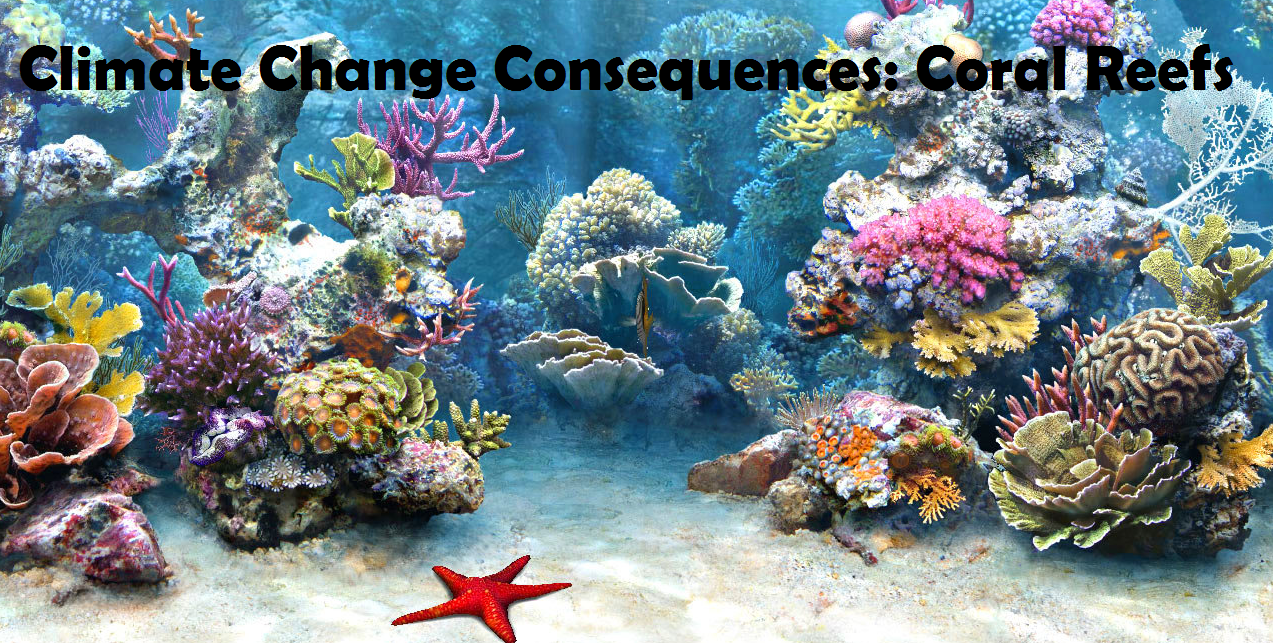As demonstrated in my post on 4
th April, the investigation of fossilised reefs allows the reconstruction of historic sea level fluctuations. This is possible due to the known ecological conditions required
by certain species of coral. Similarly, it is possible to investigate other
aspects of climate, such as air temperature, sea surface temperature, precipitation and salinity,
by using coral reefs as a
palaeoclimate proxy indicator.
Since the 1970s palaeo-climatologists have realised the potential of coral
reefs to monitor climate variations. Coral growth rates, density bands and
isotopic composition respond to changes in climate, and can therefore be used
to reconstruct past climates (
Dunbar and Wellington, 1981).
Dunbar and Wellington’s paper assessed the stable oxygen isotopic response to seasonal
changes in temperature, salinity and growth rate of branching corals. The coral
was stained at certain points in time so that visible markers facilitated the measurement of growth rates and isotopic profiles. By measuring ocean temperature, salinity and
oxygen isotopic composition of seawater over the period of a year it was possible to link these
changes with observed variations in the coral composition and growth rate. They conclude that variations in oxygen
isotopes in coral reefs record seasonal temperature changes, as can be used to
explain variations in salinity. Low growth rates were closely associated with
colder temperatures and greater cloud cover.
The stable oxygen isotope technique employed by Dunbar and
Wellington (1981) has been used extensively to reconstruct past climates.
Evans et al (2002)
reconstructed Pacific sea surface temperatures from 1607-1990 by assessing
stable oxygen isotope (δ
18O) in coral. Sea surface temperatures were
derived from oxygen isotope time series taken from 12 tropical Pacific Ocean,
Indian Ocean and Red Sea sites. By comparing this data with similar
attempts and historical data, it was possible to reconstruct sea surface
temperatures in the
Nino 3.4 region of the Pacific, the region where sea
surface temperatures have the most significant impact on shifting rainfall
patterns.
Figure 1 presents the results of their reconstruction, indicating the number of
El Nino Southern Oscillation (ENSO) warm events, where a sea surface
temperature anomaly greater than 0.5°C was inferred from their
investigation of coral reefs.

A similar technique was employed in a study by
Urban et al (2000),
in order to reconstruct ENSO variability over the past 155 years. Negative oxygen isotope anomalies can be found
in central western Pacific corals when El Nino events have increased sea
surface temperatures and enhanced rainfall. In contrast, La Nina events (characterised
by cool and dry conditions in this region) produce positive oxygen isotope
anomalies. Coral from the
Maiana Atoll was sampled and the bimonthly oxygen isotope record was used to infer climatic
conditions. Figure 2 presents results from this paper, showing the strong
correlation between oxygen isotope records in the coral and the instrumental
sea surface temperature record. This indicates the potential of this method to
reconstruct past climate.
Figure 2: Tropical Pacific variability from coral and instrumental data, 1950-1995 (Urban et al, 2000).
A review of present knowledge of tropical palaeoclimates
derived from coral reef investigation was compiled by
Gagan et al (2000).
This article reinforces the benefits that the growing network of coral oxygen
isotope records has for paleoclimatology. Constructing climate records that go
back to the last deglaciation reveals previously unknown climate variability,
such as ENSO cycles that exist on times scales of decades to centuries. However,
there are still uncertainties involved with this method that stem from a lack
of knowledge regarding the processes that control isotope changes within
corals, and the specific climate mechanisms that produce these changes. A
multi-proxy approach, combining records from ice cores, tree rings and sediment
records is encouraged to ensure high-resolution paleoclimatology.







